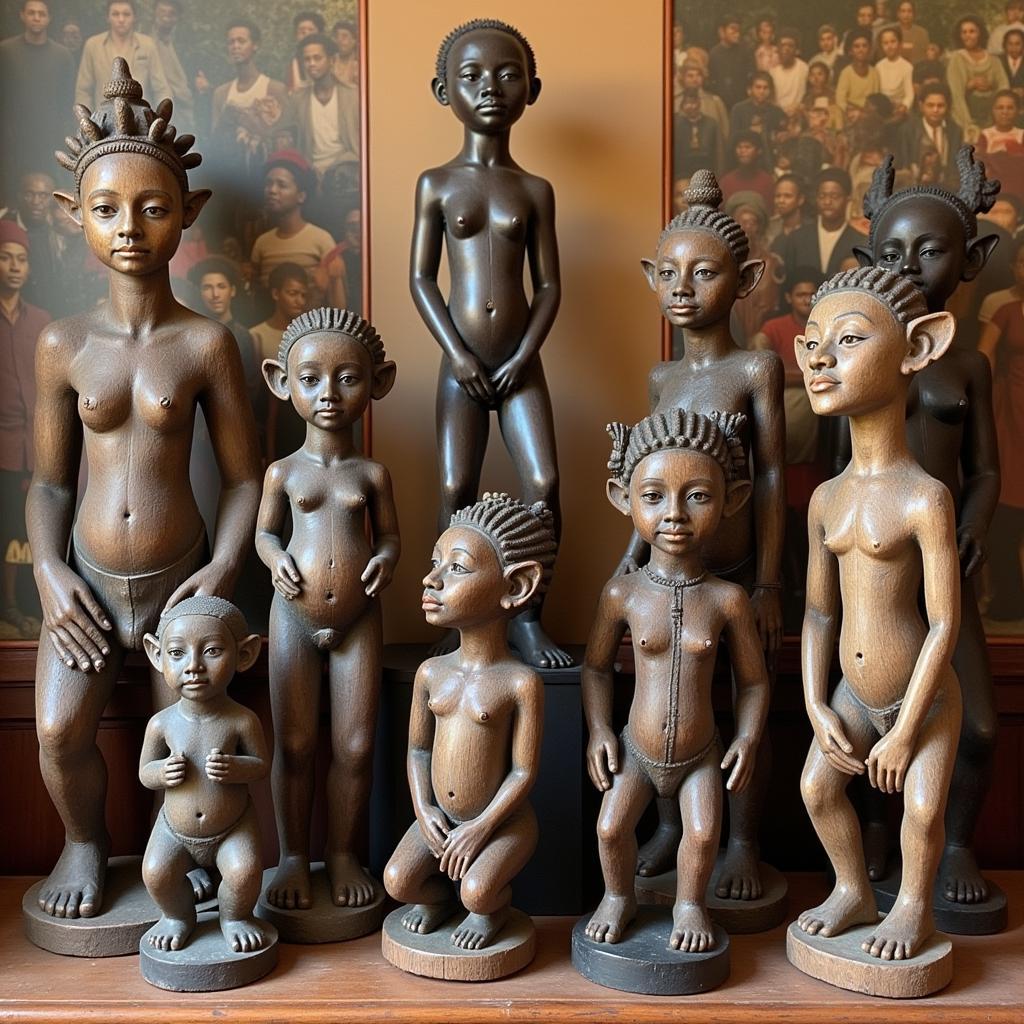The Many Shades of Beauty: Exploring African Eye Colors
The African continent boasts a diverse population, with an equally diverse range of physical characteristics. One of the most captivating aspects of this diversity is the vast array of eye colors found across the continent. While brown eyes are prevalent, African people also exhibit a beautiful spectrum of hues, ranging from hazel and amber to green and even blue.
The Genetics of Eye Color in Africa
Eye color is primarily determined by the amount of melanin present in the iris, the colored part of the eye. Melanin is a pigment that provides color to our skin, hair, and eyes. In Africa, the genetic makeup of various ethnic groups has led to a wide range of melanin levels, resulting in the stunning diversity of eye colors observed.
Dr. Amani, a renowned geneticist from Kenya, explains: “African populations have a unique genetic heritage, with a diverse array of genes that influence eye color. This genetic complexity leads to a wider spectrum of melanin expression, which explains the prevalence of non-brown eye colors in certain regions.”
The Role of Ancestry and Geography
An individual’s ancestry plays a significant role in determining eye color. For example, some ethnic groups in North Africa, such as the Berbers, have a higher prevalence of blue or green eyes than those found in sub-Saharan Africa. This can be attributed to genetic influences from European populations, who have migrated to North Africa over centuries.
Geography also plays a role. In areas of Africa with less intense sunlight, such as the highlands of Ethiopia, there is a slightly higher occurrence of lighter eye colors. This may be due to the less intense UV exposure, leading to a lower melanin concentration in the iris.
Beyond the Common Brown: Exploring Different Eye Colors
While brown eyes dominate, other eye colors are fascinating to observe. Here’s a glimpse into some of the less common hues found in Africa:
Hazel Eyes
Hazel eyes are a captivating blend of brown and green, often with flecks of gold or amber. These eyes are known for their ability to change color depending on the light. This mesmerizing color is seen in individuals from various African countries, including Ethiopia, Sudan, and South Africa.
Amber Eyes
Amber eyes, reminiscent of warm honey, are rare but stunning. This captivating hue is often found in individuals with a combination of brown and yellow pigments in their iris. Amber eyes are more commonly found in North Africa, particularly in Morocco and Algeria.
Green Eyes
While green eyes are relatively uncommon globally, they are not unheard of in Africa. The prevalence of green eyes is slightly higher in some parts of North Africa, particularly in Egypt and Tunisia, where there is a greater genetic influence from Mediterranean populations.
Blue Eyes
Blue eyes are a rarer sight in Africa, but they do exist, particularly in North Africa. In regions where there has been significant historical interaction with European populations, such as Morocco and Algeria, blue eyes can be found. This is due to the recessive gene responsible for blue eyes being passed down through generations.
Celebrating the Spectrum of African Beauty
The diverse range of eye colors in Africa is a testament to the continent’s rich genetic heritage and complex history. It’s important to recognize and celebrate this unique beauty, challenging the misconception that only brown eyes are considered “African.” Each individual, with their unique combination of features, contributes to the tapestry of African beauty.
Frequently Asked Questions
1. Are blue eyes common in Africa?
While not as common as brown eyes, blue eyes are found in certain regions of North Africa, primarily due to historical migrations from Europe.
2. What causes the different eye colors in Africa?
Eye color is primarily determined by the amount of melanin in the iris. The genetic makeup of various African ethnic groups and their historical interactions have led to a wide range of melanin levels, resulting in the diverse eye colors we see.
3. Are green eyes more common in certain African regions?
Green eyes are more prevalent in some parts of North Africa, particularly Egypt and Tunisia, due to genetic influence from Mediterranean populations.
4. What’s the most common eye color in Africa?
Brown eyes are the most prevalent eye color across the African continent.
5. How can I learn more about African diversity?
You can explore books, documentaries, and websites dedicated to African culture and heritage. There are also many online resources that discuss the history and genetics of African populations.
Let’s Connect!
Have more questions about African Eye Colors or other aspects of African culture and diversity? Contact us today! Our team is ready to provide you with the information you need.
Phone: +255768904061
Email: kaka.mag@gmail.com
Address: Mbarali DC Mawindi, Kangaga, Tanzania
We are always here to share knowledge and celebrate the rich tapestry of African Life.


